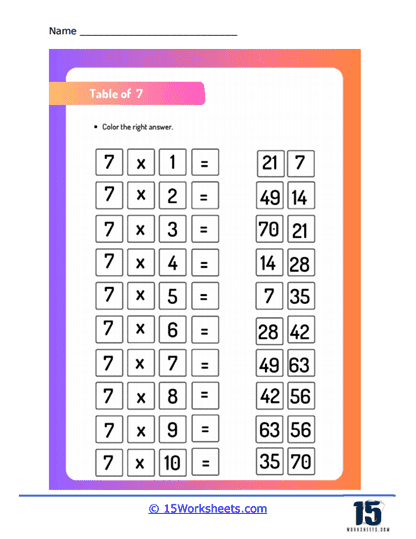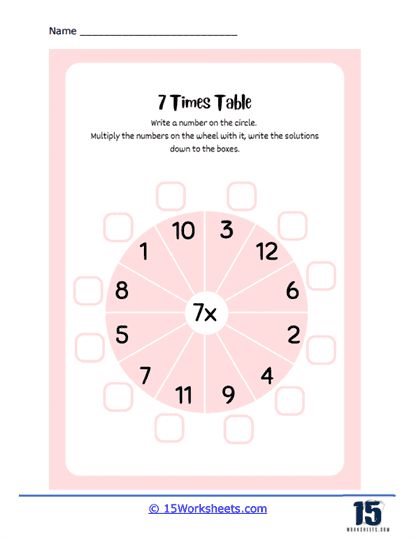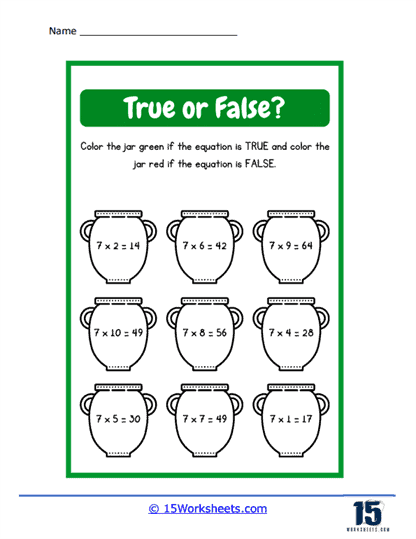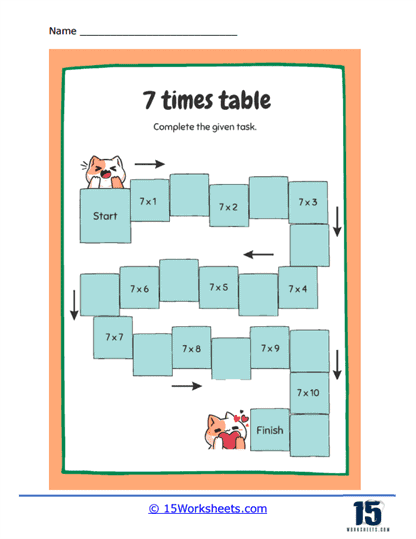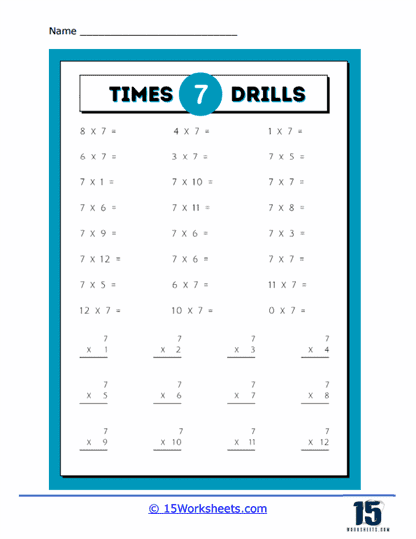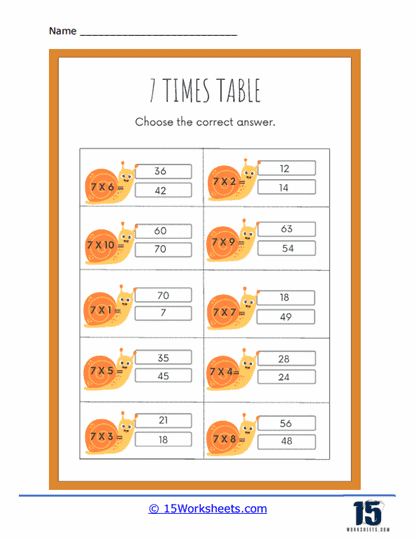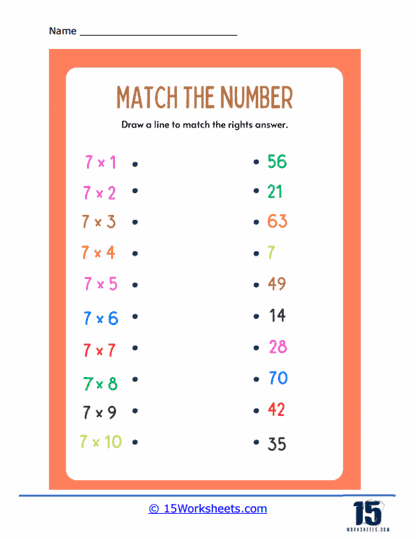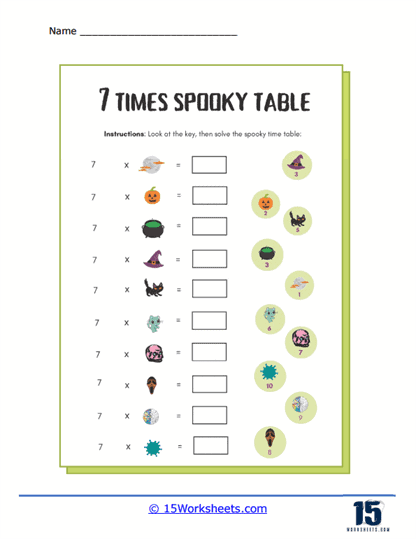7 Times Tables Worksheets
About These 15 Worksheets
Multiplication, in its essence, is a swift way of adding the same number again and again. The number 7, often viewed as a magical and unique number, can be tricky for some when it comes to multiplication. That’s where 7 times table worksheets come in handy. These worksheets are a compilation of exercises aimed at helping students practice and understand the multiplication of numbers by 7. Through repetitive practice, learners can grasp the pattern, challenges, and nuances of multiplying with 7.
Types of Problems
Direct Multiplication – The bread and butter of any times table worksheet. Here, students multiply different numbers by 7.
Example: 7 × 4 = ?
Solution: 7 added 4 times is 28. Thus, 7 × 4 = 28.
Fill in the Gaps – These are about recognizing patterns and sequences.
Example: 7 × ___ = 49
Solution: How many 7s make 49? The answer is 7, so the blank should be filled with 7.
Multiple Choice Questions – A familiar exam-style format that tests the student’s recall and understanding.
Example: What is 7 × 6?
a) 40
b) 42
c) 45
Solution: 7 times 6 equals 42. So, the correct answer is b) 42.
Word Problems – These bring multiplication into real-life scenarios, making abstract numbers tangible.
Example: Jenny has 7 boxes of crayons. If each box contains 7 crayons, how many crayons does she have in total?
Solution: The multiplication here is 7 (boxes) times 7 (crayons), equaling 49 crayons.
Reverse Multiplication (Division) – Solidifying the understanding that multiplication and division are opposite operations.
Example: 56 ÷ 7 = ?
Solution: If you divide 56 into 7 equal groups, each group will have 8. Thus, 56 ÷ 7 = 8.
Visual Problems – Great for those who learn best with visual aids.
Example: If you see a picture of 6 groups with 7 stars in each group, how many stars are there in total?
Solution: Counting them or multiplying, you get 6 times 7, which is 42 stars.
Mixed Operations – These can include addition, subtraction, and multiplication in one problem.
Example: Sarah has 3 sets of 7 books each. If she gives away 5 books, how many does she have left?
Solution: First, multiply 3 by 7 to get 21 books. Then, subtract 5 to find out Sarah has 16 books left.
Error Spotting – Challenges students to find mistakes in given multiplication problems.
Example: Is 7 × 8 = 54 correct?
Solution: No, because 7 times 8 is 56, not 54.
The world of the 7 times table worksheet is diverse, engaging, and structured to cater to varied learning styles. By weaving together direct problems with word problems and visual tasks, these worksheets ensure that every student, whether they’re a visual learner, a kinesthetic learner, or an auditory learner, gets a fair chance at mastering the table.
For Reference: The 7 Times Table
0 x 7 = 0
1 x 7 = 7
2 x 7 = 14
3 x 7 = 21
4 x 7 = 28
5 x 7 = 35
6 x 7 = 42
7 x 7 = 49
8 x 7 = 56
9 x 7 = 63
10 x 7 = 70
11 x 7 = 77
12 x 7 = 84
13 x 7 = 91
14 x 7 = 98
15 x 7 = 105
16 x 7 = 112
17 x 7 = 119
18 x 7 = 126
19 x 7 = 133
20 x 7 = 140







